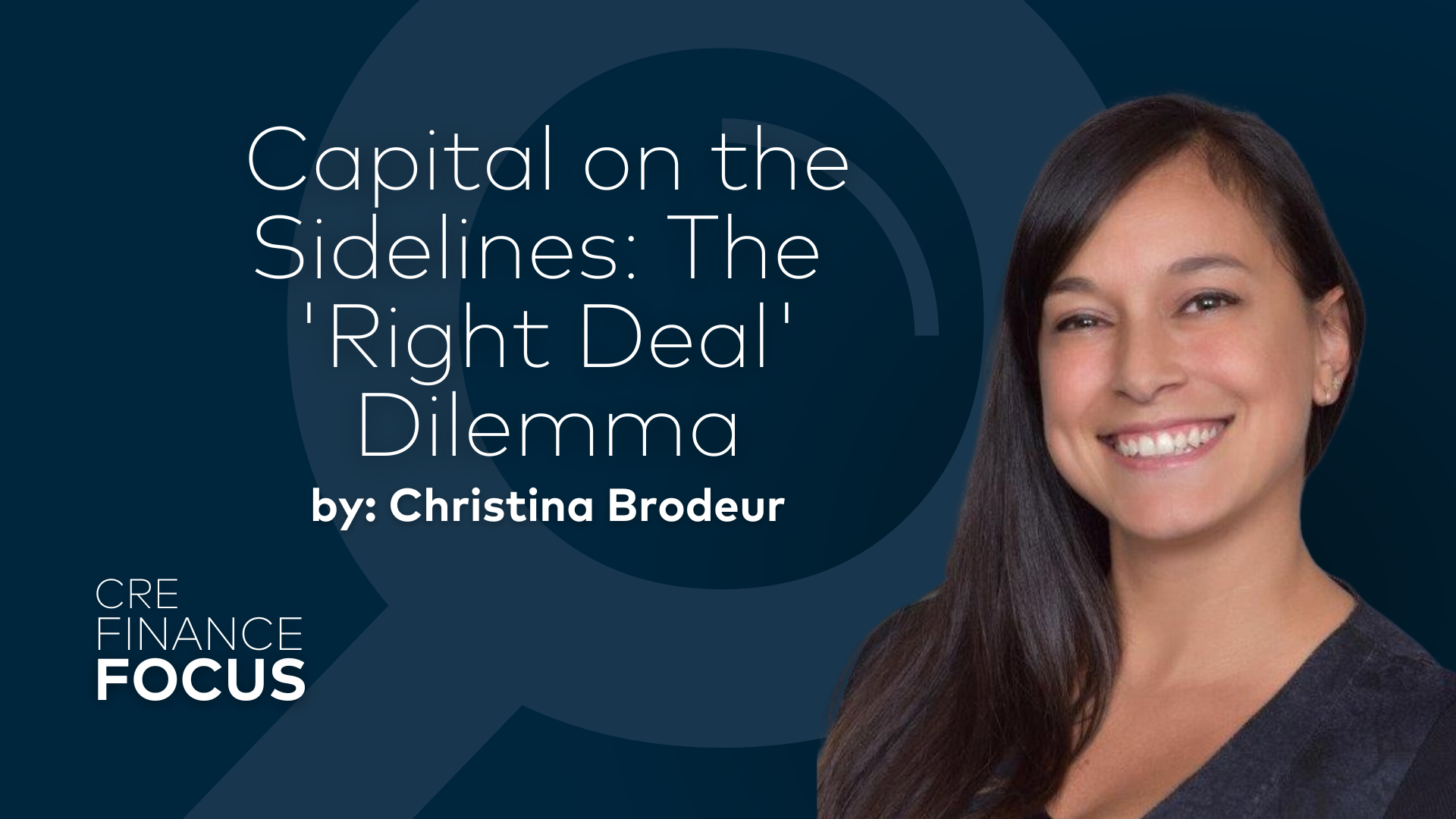
By Christina Brodeur
Senior Managing Director, Client Services
Since the Federal Reserve’s interest rate hikes began in March 2022, the liquidity of commercial real estate (CRE) markets has been a focal point of industry discussions. Origination volumes slowed, and in some cases halted entirely, as market participants anticipated rate cuts that have yet to materialize. With each Fed meeting resulting in rate increases aimed at combating inflation, many lenders and borrowers remained on the sidelines, waiting for relief that never arrived. The idea that rates would be “higher for longer” has now evolved into “current for longer,” signaling an acceptance that sub 3% ten-year treasuries are a thing of the past, and that this current interest rate environment is the new normal.
Maturing loans and market challenges
As we look ahead to 2024 and 2025, a staggering USD 1.08 trillion of the USD 5.54 trillion in CRE loans are set to mature. Add in more than 60 global elections this year (impacting about 49% of the world’s population), rising costs of labor and materials, and increasing insurance premiums and property tax obligations, it is a challenging and uncertain environment even before factoring in interest rates. Despite these headwinds, the market has seen an uptick in securitization lending in the first half of the year. However, banks and CLO issuers have yet to return to the market at similar volumes, potentially signaling an emerging appetite and capacity to deploy.
The “right deal” dilemma
Both lenders and borrowers alike are sitting on capital awaiting the “right deal.” Even the most straightforward transactions now require more complex deal structuring in the capital stack or credit enhancements. This can include interest reserves in lieu of interest rate caps or higher insurance deductibles and self-insuring rather than a traditional policy. For these transactions to be viable, borrowers must have sufficient funds and the financial resilience while lenders need adequate capital to deploy. Given that inflationary pressures are not showing any signs of easing, some lenders are finally willing to take on losses and divest themselves of underperforming assets. This strategy frees up capital and reduces reserve requirements for transactions that have been sitting on the books longer than intended, thanks to additional modifications and extensions. As a result, lenders can redeploy these funds into higher quality transactions at better rates, yielding improved returns.
Although opportunities exist, it is not an easy path forward. Many debt funds raising capital acknowledge the current environment is significantly more challenging. Much of this is driven by credit risk and market appetite, as not every fund will go to the same investor base for capital based on their lending strategy. However, for those investors in the value-add space, or those looking to enter it, this period presents an excellent opportunity to cherry-pick the “right deal” in the right market before the lending activity intensifies again.
Addressing problematic deals
Interest rates will play a large part in spurring lending activity, but that alone will not solve the existing problem deals that were made when rates were lower. Some deals which have undergone repeated extensions and modifications, were perhaps structured too aggressively, and would likely have been problematic regardless of the increased interest rate environment. Rate hikes have only accelerated and exacerbated these problems. As more deals underperform, balance sheet lenders have capital tied up in increased reserve requirements, and CLO issuers approach the threshold for deals that they can buy out, we will reach a critical mass. These deals will begin trading at lower than anticipated returns, potentially freeing up much-needed liquidity that will gradually re-enter the markets.
Conclusion
The potential for a Federal Reserve interest rate cut before year-end could be the catalyst the industry needs to resume lending activities. Amid tightening underwriting and credit standards as well as increased regulatory requirements, lenders have had to adapt to this new lending environment, reminiscent of the post-GFC period. If the GFC and COVID-19 pandemic have taught us anything, it is that the CRE industry is capable of pivoting and adapting to new realities. By staying vigilant and responsive to market conditions, the CRE industry can navigate these turbulent times and emerge stronger, poised to capitalize on future opportunities.
Christina Brodeur, Senior Managing Director of Client Services at Trimont, has over 20 years of commercial real estate experience in debt originations and portfolio management as well as overseeing several servicing and asset management platforms for various financial institutions and third-party service providers.
CRE Finance Focus is Trimont’s bi-weekly LinkedIn newsletter delivering distinct perspectives on the most pressing topics of today from industry experts. Keep your finger on the pulse of the #CRE market and subscribe today.
If you have questions about navigating the current CRE landscape, contact us at info@trimont.com.
Have questions or topics you would like to see covered? Submit them here.

About Trimont LLC
Trimont (www.trimont.com) is a specialized global commercial real estate loan services provider and partner for lenders seeking the infrastructure and capabilities needed to help them scale their business and make informed, effective decisions related to the deployment, management and administration of commercial real estate secured credit.
Data-driven, collaborative, and focused on commercial real estate, Trimont brings a distinctive mix of intelligent loan analysis, responsive communications, and unmatched administrative capabilities to clients seeking cost-effective solutions at scale.
Founded in 1988 and headquartered in Atlanta, Trimont’s team of 400+ employees serves a global client base from offices in Atlanta, Dallas, Kansas City, London, New York and Sydney. The firm currently has USD 236B in loans under management and serves clients with assets in 72 countries.